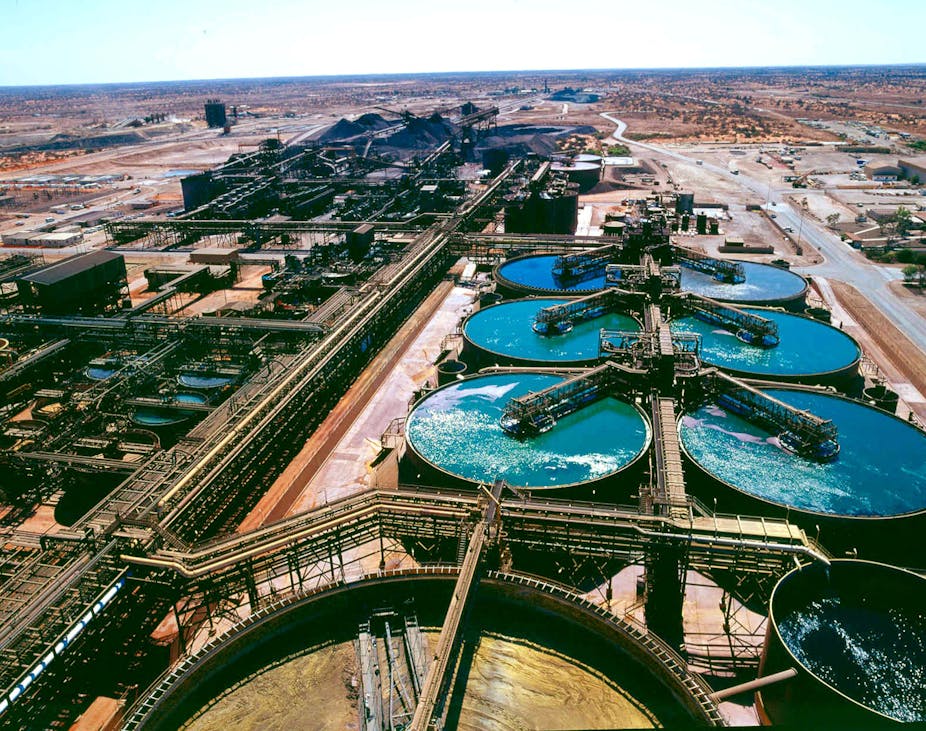South Australian premier Jay Weatherill made the curious announcement on Sunday that there will be a Royal Commission to examine the state’s future role in the nuclear industry. There has been bipartisan support in South Australia for the state being a major uranium exporter, but no support for any involvement beyond that.
The inquiry will be led by former governor Kevin Scarce. Scarce has previously expressed support for a renewed debate on nuclear energy.
However, we have already had several inquiries into nuclear expansion. The new Royal Commission risks re-treading the same old ground and uncovering nothing new.
The cost of nuclear
In 2006 prime minister John Howard held an inquiry into the nuclear industry when his studied inaction on climate change became an obvious political liability. Howard appointed a clearly pro-nuclear group to make the case for greater Australian involvement in the industry.
Though the committee led by Ziggy Switkowski were strong supporters of the nuclear option, they were also scientifically qualified and able to assess the technical evidence. They concluded that it would take significant government subsidies to expand Australia’s role in the nuclear industry.
This was not a surprising conclusion.
For decades there has been glib talk about uranium enrichment in Australia, but these schemes have always foundered – partly for lack of a social licence, partly because of the dubious economics. As Dr Alan Roberts of Monash University observed at a forum we both spoke at in the 1980s, wherever uranium is enriched, the tax-payers are impoverished.
Waste and weapons
Australia’s role in the nuclear industry was thoroughly canvassed nearly 40 years ago in the Fox Report, the outcome of the inquiry into the Ranger uranium mine in the Northern Territory.
It concluded that exporting uranium contributed to two serious problems, the production of radioactive waste and the proliferation of nuclear weapons. Forty years later, those issues remain unresolved.
Thousands of tonnes of spent fuel rods and radioactive waste are held near nuclear power stations and weapons facilities around the world, with no agreement on long-term storage.
While that is primarily a technical problem that could in principle be solved if enough resources are committed to it, weapons proliferation is a political problem that does not appear to have a solution.
So exporting uranium is still making the world a dirtier and more dangerous place for short-term commercial gain.
Do we need another review?
Given that those conclusions are still valid and that a technically qualified committee revisited the question of further Australian involvement in the nuclear industry only a few years ago, what is the point of a Royal Commission?
Some observers such as ABC political reporter Nick Harmsen see the process as another attempt to persuade South Australians to accept radioactive waste, importing a whole new raft of environmental problems.
In principle, there is a process for public involvement in establishing the terms of reference, but the timescale for that exercise suggests it is a complete charade. The web site gives only until next Monday, a bare week after Weatherill’s announcement, for public comment on the terms of reference.
Also, there has been no announcement of any independent scientific or environmental expertise to guide former governor Kevin Scarce.
The critical issue is how the proposed further involvement in the nuclear industry fits with the agreed commitment to Ecologically Sustainable Development, adopted by Council of Australian Government as long ago as 1992. The reason most environmentalists oppose nuclear energy is that they see it as creating serious environmental problems (radioactive tailings, accidents in nuclear power stations like Fukushima, managing radioactive waste) - all hazards to ecological communities as well as humans.
South Australia leads the mainland states in its harnessing of solar and wind energy. Together they supplied more than one-third of the state’s electricity for the whole of last year and all of the state’s power for one working day in September. The Port Augusta community is campaigning for a solar thermal power station to replace their antiquated coal-fired facility.
Any objective assessment of the state’s needs in the context of a commitment to sustainable development will favour going forward by expanding the proven capacity of clean renewables, rather than gambling on unproven nuclear fantasies.

